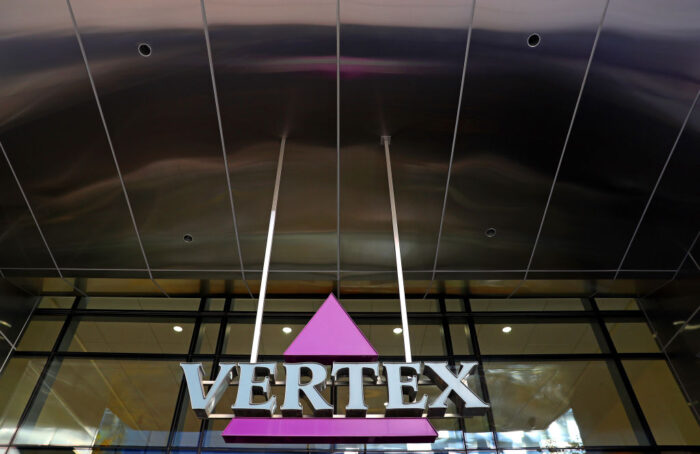
A Vertex Pharmaceuticals drug viewed as a successor to a non-opioid pill that won a landmark FDA approval earlier this year has failed a mid-stage clinical trial, dealing a setback to the company’s strategy of building a pain drug franchise to diversify its revenue streams.
Based on the clinical trial results, Vertex will not advance the drug, VX-993, to Phase 3 testing as a monotherapy for treating acute pain, the company announced after Monday’s market close.
The pain approach of Boston-based Vertex focuses on blocking sodium channels, pathways in the peripheral nervous system that transmit pain signals. By blocking these signals in the periphery, this approach is intended to avoid the addiction risks posed by opioid drugs that hit targets in the central nervous system.
VX-993 is designed to block a sodium channel called NaV1.8, the same target as Journavx, Vertex’s twice-daily pain pill approved in January. With VX-993, Vertex was developing both oral and intravenously administered formulations. The IV version had offered the potential for higher dosing and for providing an alternative to IV opioid medications. The company also hoped VX-993 could be part of a future combination therapies alongside a drug that goes after a different sodium channel, NaV1.7.
The results reported Monday are from a placebo-controlled dose-ranging study that evaluated an oral version of VX-993 in patients who have acute pain after bunionectomy surgery. The 367 study participants were assessed according to a scale used to measure pain intensity. Results showed numerical improvement in scores for the middle and high doses, but not enough to be statistically significant.
“This proof-of-concept study was powered to test whether VX-993 would result in higher clinical efficacy than previously demonstrated with the NaV1.8 pathway,” Carmen Bozic, executive vice president, global medicines development and medical affairs, and chief medical officer at Vertex, said in a prepared statement. “Based on these results, as well as the totality of preclinical data and results from our previous bunionectomy clinical studies, VX-993 is not expected to be superior to our existing NaV1.8 inhibitors and therefore we will not be advancing it as monotherapy in acute pain.”
The Phase 2 results for VX-993 were reported concurrent with Vertex’s release of second quarter 2025 financial results. In that report, Vertex said its discussions with FDA indicated the regulator does not see a path to broaden Journavx’s label to peripheral neuropathy at this time. Consequently, Vertex will not a start a Phase 3 test of the pill in lumbosacral radiculopathy, a common lower back pain condition also known as sciatica.
The company said it will prioritize development of Journavx in diabetic peripheral neuropathy; a Phase 2 study is ongoing. A separate Phase 2 test of VX-993 is enrolling patients with diabetic peripheral neuropathy. Vertex expects to complete enrollment in both mid-stage tests by the end of 2026. The plan is to advance Journavx to a pivotal test in diabetic peripheral neuropathy. Vertex said it will continue to work with the FDA to expand the diabetic peripheral neuropathy indication over time to include other neuropathic pain conditions and to assess potential ways to secure a broad label in this type of pain.
Since Vertex launched Journavx in early March, the company has reported more than 110,000 prescriptions written and filled for the product, in both hospital and retail settings, for different types of acute pain. The company also said nearly 150 million people have covered access to the product, representing nearly half of U.S. covered lives. Vertex reported $13.3 million in revenue from Journavx for the first half of 2025.
Photo: David L. Ryan/The Boston Globe, via Getty Images





